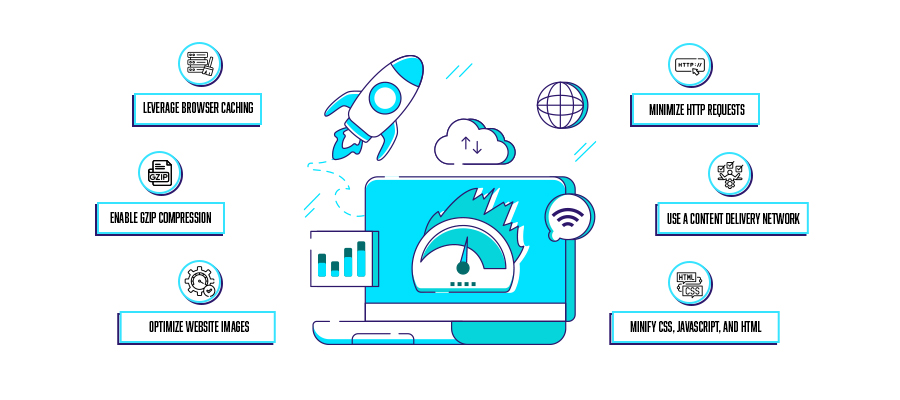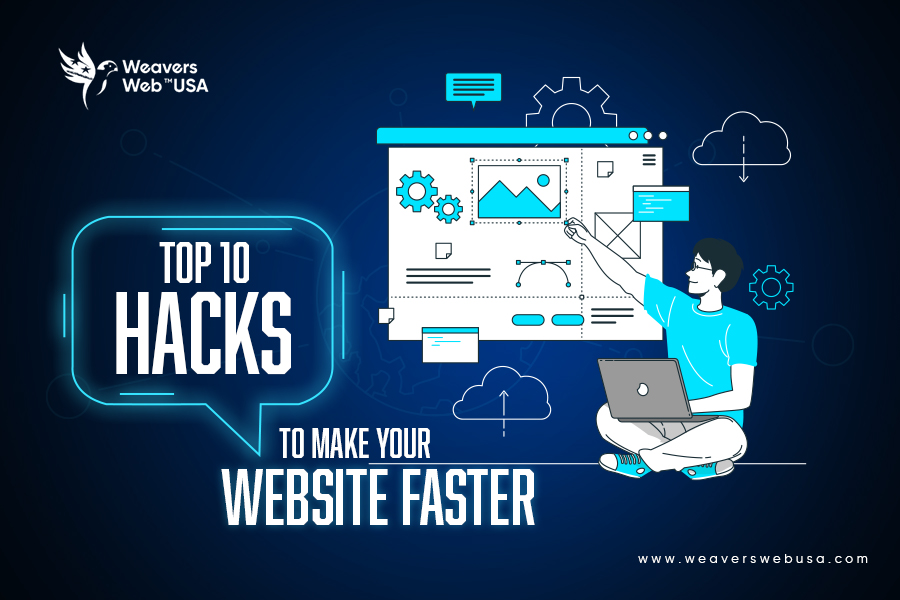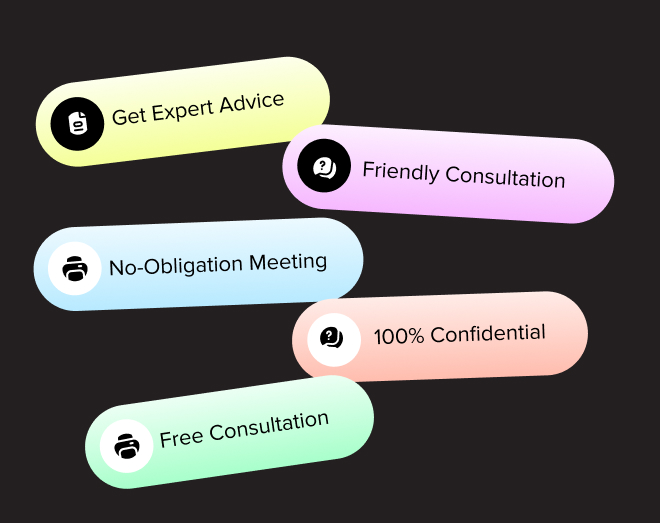No one likes a slow-loading website. Ask yourself. Would you hang around a site that takes forever to load? The answer would definitely be no. Well, the answer is the same for everyone on the internet. Anyone would move to a different fast-loading site, leaving yours if it takes too much time to load.
With a slow website, you are not only losing visitors but also potential customers. Increasing website speed will have a positive impact on the overall impression of your website and will get higher traffic.
In this blog, we will tell you how to improve your website speed. You can use these tips as a part of full cycle product development of your website or as a means to increase your website speed later on.
What is Website Speed?
Website speed refers to how quickly a webpage loads when a user visits it. It is an essential factor in enhancing user experience. By making your website load fast, you ensure users have access to the content without delay, thus reducing frustration and increasing engagement.
More engagement will mean the user is more likely to do what you want them to do on your site. In other words, better website speed translates to better website KPIs.
In contrast, a slow-loading website almost always means higher bounce rates, lower conversion rates, and a negative impression of your brand.
What are the Important Metrics?
Some metrics indicate a website’s performance. Understanding these metrics is essential to determining where the fault lies. Tools like Google PageSpeed Insights will provide you with a quick report on your website’s performance and what you can do to improve it.
These are the metrics you should care about when it comes to website speed and performance.
Page load time: Measures the total time it takes for a webpage to display all its content. Ideally, this time should be under 2-3 seconds.
Time to first byte (TTFB): This is the time it takes for the server to respond with the first byte of data. An optimal TTFB should be under 200ms.
First contentful paint (FCP): Measures the time it takes for the first visible content (text, image, etc.) to appear on the screen. An optimal FCP should be under 1.8 seconds.
Largest contentful paint (LCP): This metric measures the time it takes for the largest visible content (banner image or headline) to load. A good LCP score is under 2.5 seconds.
Cumulative layout shift (CLS): This metric measures any unexpected layout shifts on a page during loading. An optimal CLS score is less than 0.1.
First input delay (FID): This metric measures the time it takes for the website to respond to the first user interaction (like a click on a button, etc.). An optimal FID is under 100ms.
Speed index: This metric measures how quickly the content on a page is visually displayed. A lower SI means the page appears faster. An optimal SI is under 2 seconds.
Core web vitals: Google uses three metrics (LCP, CLS, and FID) as key indicators of website health and user experience.

How to Make Your Website Faster
Ready for a super fast website? Here are 10 powerful hacks to do it.
Everyone loves eye-catching images on a website. In fact, the absence of relevant and quality images would make your website content drab and unattractive to users. The flip side is that visuals are usually large files that can significantly slow down a page’s speed.
However, like everything else, this too can be fixed quite easily.
- Use proper formats: For better compression, Convert images to WebP, AVIF, or JPEG 2000 instead of JPEG or PNG.
- Resize before uploading: Do not rely on HTML/CSS to resize. If you want your website speed to scale, use the exact dimensions needed.
- Compress images: Reduce the image file size without quality loss using tools like TinyPNG, ImageOptim, and others.
- Use lazy loading: To defer image loading until they are about to be displayed in the viewport, use loading= “” lazy. ”
- Use CSS sprites for icons and small graphics to reduce HTTP requests.
It’s best to implement these tips during your website’s full cycle product development, but you can also implement them later.
Every element on a webpage (images, CSS files, JavaScript, fonts, etc.) requires a separate HTTP request to load. When users visit your website, their browser requests your server to fetch resources. If your page has, say, 50 separate resources, it will load much slower than if it had 10 optimized resources.
You can reduce HTTP requests by following these tips:
- Combine CSS and JavaScript files. If you have multiple CSS or JS files, you can combine them to reduce requests. Hence, merge multiple CSS files into one main stylesheet and combine JavaScript files into a single script where possible.
- Use CSS Sprites for images. Each small image in your website (icons, logos, buttons) generates a separate HTTP request. Use CSS sprite to combine these images into one file, reducing the number of requests.
- Reduce third-party scripts. Many websites use third-party scripts for social media widgets, analytics, ads, and tracking. While functional, these scripts add to the number of requests that can slow down your site. To fix this, remove unnecessary third-party scripts (old tracking codes, unused widgets) and load third-party scripts asynchronously to avoid blocking page load.
- Limit external or web fonts. Web fonts like Google or Adobe fonts require additional HTTP requests to load. They may improve the design, but excessive external fonts slow your website. Hence, use system fonts as far as possible. Also, limit your site to 2-3 font families to avoid loading unnecessary font weights.
-
Use a Content Delivery Network
A CDN is a network of servers distributed worldwide. Your CDN stores a cached version of your site, and when a user accesses your site, the content is delivered by the nearest server. This significantly reduces load times and improves performance.
For the best results:
- Choose a reputed CDN provider. Opt for well-known CDN providers with robust infrastructure and wide coverage, such as Cloudflare or Amazon CloudFront.
- Integrate the CDN: Set up and configure your CDN to work seamlessly with your website. You may need to update DNS settings or modify your website’s configuration to use the CDN to deliver static files.
- Configure caching for static assets. Make sure your CDN caches static assets like images, CSS, and JavaScript files. This reduces the load on the original server and allows content to be delivered quickly.
-
Minify CSS, JavaScript, and HTML
Minification involves removing unnecessary characters like spaces, comments, and line breaks from your code without changing its functionality. This technique reduces file sizes, which makes them load faster on browsers, improving website speed and performance.
Unoptimized CSS, JavaScript, and HTML on a website can lead to slower loading times due to larger file sizes and increasing bandwidth usage.
- Use minification tools: Use tools like UglifyJS, CSSNano, or HTMLMinifier to automate the minification process for your code files.
- Automated minification: WordPress users can use WP Rocket or Autoptimize to automate the minification process. Developers can similarly use Webpack, Babel, or Gulp to automate.
Use this in full cycle product development for your website, and you will never have to worry about website speed.
GZIP is a modern file compression standard utilized by over half of websites that use compression. It can reduce the data sent over the internet by up to 70% and thus dramatically reduce the loading speed.
GZIP compression minimizes the content of HTTP requests and responses before sending them to the browser. When a user tries to access your website, the browser unzips the files and presents them to the user.
Browser caching stores static resources (images, CSS, JS) on a user’s device. That way, when the user revisits, they don’t have to be downloaded again.
This improves the load times for returning visitors by reducing the number of requests to the server.
- Set up proper cache expiration times. Configure your server to specify how long different types of files should be cached. Set longer expiration times for static assets that don’t change over time. On the other hand, set a shorter expiration time for content that updates frequently.
-
Optimize Server Response Time
A slow server can cause a website to load slowly, regardless of the optimizations. Hence, to optimize server response time:
- Choose a high-performing web host. If your hosting is slow, so will your site speed. If this is the case, upgrade to a better hosting provider. For small websites, you can choose from SiteGround and Bluehost. For enterprise and custom needs, you can choose from AWS, Google Cloud, etc.
- Use VPS or Cloud hosting. In shared hosting, multiple websites share the same server, which can result in a slow website. VPS or Cloud hosting utilizes a bigger or dedicated server for your website, which improves the website speed.
- Reduce unnecessary plugins and scripts. Too many plugins or scripts increase server processing time. Tom optimizes, deactivates, and deletes unused plugins and avoids heavy plugins.
-
Optimize CSS Delivery
CSS can affect a web page’s rendering, causing initial loading delays. Optimize the CSS delivery to make sure that the critical styles required to load above-the-fold content are loaded first. This improves the perceived load speed.
- Use inline critical CSS. Inline the CSS necessary to load above-the-fold content directly within the HTML. This makes sure that the browser can start rendering fast.
- Defer non-critical CSS. Make adjustments to load non-essential CSS files asynchronously or postpone them until after the initial render. Use tools like LoadCss to implement this.
Utilize this method in the initial phases of full cycle product development of your website to see a fast-loading site for your business right from the start.
-
Prioritize Above-the-Fold Content
Prioritize the content that appears above the fold. This will ensure users view the most important part of the website as soon as they land, improving your site’s perceived loading time.
- Lazy load below-the-fold content. Implement lazy load for content (images, video, and other media) that appears below the fold. This trick will initially only load the content above the fold, increasing the perceived loading speed.
- Prioritize critical resources. Make sure that the critical CSS and JavaScript files required to render above-the-fold content are loaded first. Use resource hints like preload and prefetch to prioritize these resources, ensuring they are available as soon as needed.
-
Use the Latest Web Technologies
Using older technologies can slow down your website. They may be slower, less efficient, or unsupported by modern browsers, which can lead to performance issues.
- Upgrade to HTTP/2 or HTTP/3. HTTP loads files one at a time, making the page load slower. HTTP/2 loads multiple files in parallel, reducing latency.
- Use the latest PHP. Older PHP versions (7x or lower) are slower and less secure. PHP 8+ offers substantial performance improvements.
- Use modern JavaScript and CSS. Older JavaScript and CSS methods (like jQuery-based scripts) slow down website rendering. For better performance, use modern JavaScript frameworks like React, Vue.js, or Svelte. Also, use CSS Grid and Flexbox instead of outdated float-based layouts.
Takeaway
A fast website can be a game changer for your business. A fast-loading website catches everyone’s attention, and with the right content and design, it can fetch you potential leads, clients, and money.
The above tricks are tried and tested and, when applied correctly, can greatly increase your website speed. So, follow these tips and improve your website speed today.






